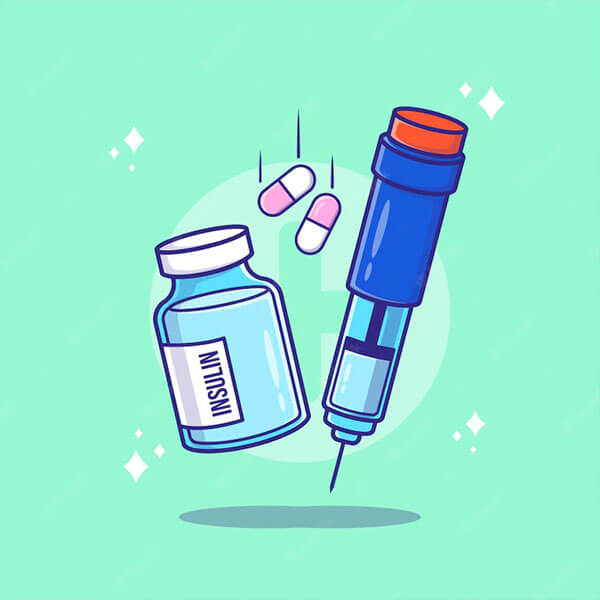
3 Most Frequently Asked Questions about Insulin
Fun Fact: Did you know insulin was first created in 1921 and the first time a person was given an insulin injection was in 1922?
 How Does Insulin Work?
How Does Insulin Work?
Insulin works by moving sugar from the bloodstream into cells so it can be used for energy. There are a few different types of insulin currently on the market.
✔ Long-acting insulins are typically taken once daily, and last from 18 to 40 hours depending on the exact insulin. These help keep sugars level in between meals. They are meant to bring sugars down in hours to days, rather than minutes to hours.
| Insulin | Time in Body |
|---|---|
| Levemir | 10 – 20 hours |
| Lantus, Basaglar | 20 – 24 hours |
| Toujeo, Tresiba | 32 to 40 hours |
✔ Fast acting (aka meal-time) insulins, work differently than long-acting insulins. They are designed to go in and out of the body quickly, so as to cover the sugar in the food that you are eating.
| Insulin | Time to Onset | Time in the Body |
|---|---|---|
| Afrezza (inhaled insulin) | 2 minutes | 1.5 – 2 hours |
| Fiasp, Lyumjev | 2 minutes | 3 – 4 hours |
| Humalog, Novolog | 15 minutes | 3 – 4 hours |
| Humulin R, Novolin R | 30 minutes | 5 – 6 hours |
 What is the Best Way to Give Insulin?
What is the Best Way to Give Insulin?
Depending on what type of insulin you are on, the administration might differ slightly. For the newer short-acting insulins, like Fiasp, Lyumjev, and Afrezza, you can take your insulin just a minute or two before you eat. For Novolog and Humalog, you need to take your insulin 15 minutes before you eat so it has time to take effect. With regular insulin, like Humulin and Novolin, you need to wait 30 minutes after taking your dose to eat.
Making sure to wait the correct amount of time before eating is important. Not waiting can cause the food you have eaten to affect your blood sugars before your insulin starts working, causing high blood sugars. Low blood sugars can follow these highs once the insulin begins working if the food is already out of your system. You also do not want to wait too long to eat once insulin has been administered to avoid having low blood sugar.

 Can You Reduce Your Insulin Needs?
Can You Reduce Your Insulin Needs?
It is possible for both patients with Type 1 and Type 2 diabetes to decrease the amount of insulin they need. The best way to do this is to exercise. When you exercise, your muscles need the sugar in your body faster than they normally would, and this lowers your blood sugar without needing insulin. Usually, insulin is required in order to get sugar into your cells, but this can be temporarily bypassed when you exercise.
 Check out some of our exercise recommendations in our weekly Movement Monday videos on our Facebook Group.
Check out some of our exercise recommendations in our weekly Movement Monday videos on our Facebook Group.
For Type 2 diabetes, there are some medications that can be used to either increase your insulin sensitivity or stimulate insulin production. Insulin resistance is common with Type 2 diabetes. This resistance occurs from too much sugar being present in your bloodstream when cells no longer allow insulin to work and sugar to enter them. Medications like Ozempic, Trulicity, Mounjaro, and metformin can work to decrease possible insulin needs by stimulating insulin release from the pancreas or increasing receptor activity to allow for more insulin to enter the cells. Talk with your doctor or healthcare provider to see if these are appropriate for you.
Summary Insulin is a hormone that works to regular blood sugar levels by guiding sugar into cells. There are quite a few different types of insulins on the market now, some not even requiring injections. It’s important to know when the best time to administer insulin is, to allow it to have an appropriate amount of time to work prior to eating something, as some have different time requirements than others. You can also potentially decrease insulin needs with exercise, or if you have Type 2 diabetes with certain medications.

 How Does Insulin Work?
How Does Insulin Work?




